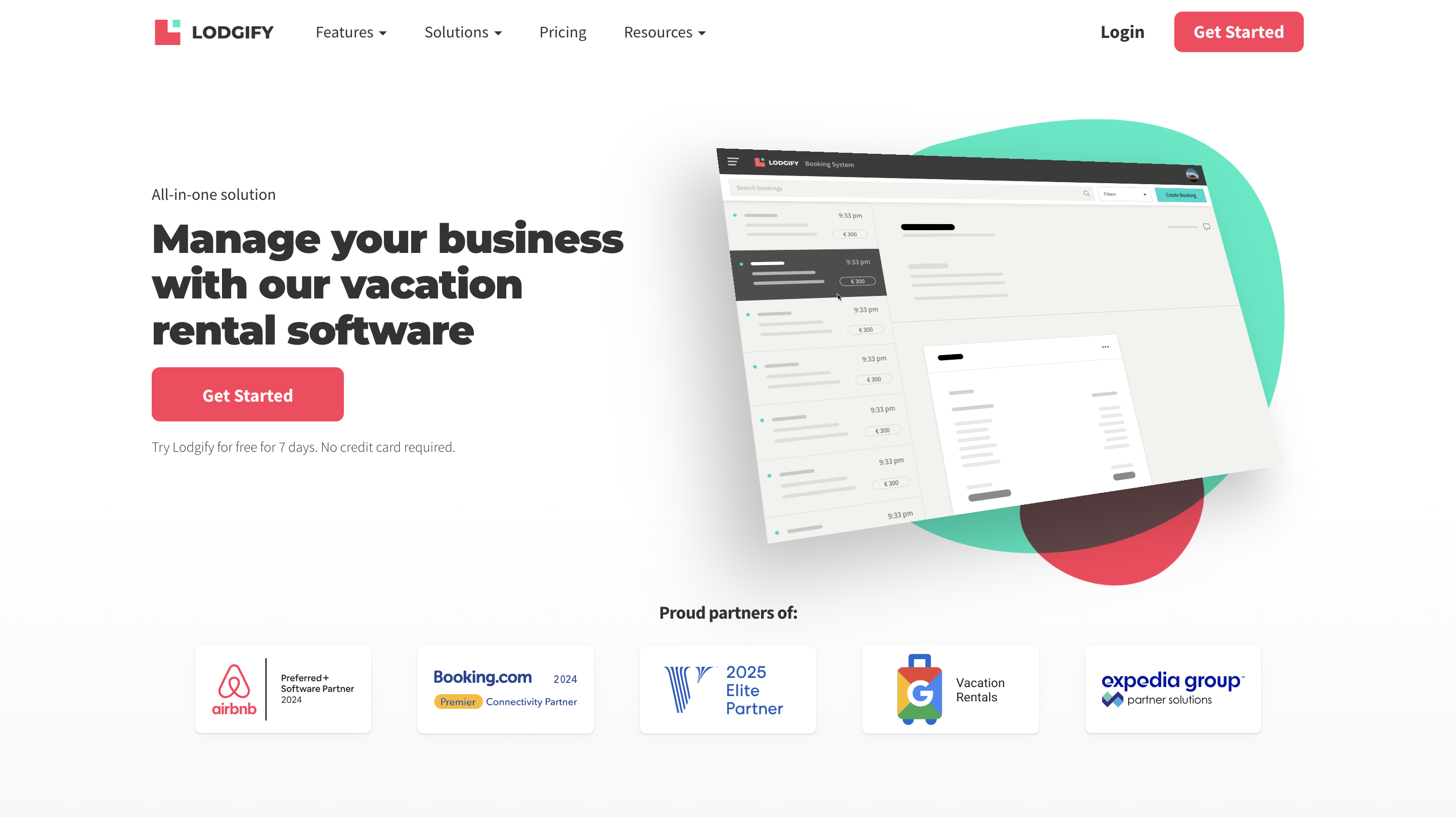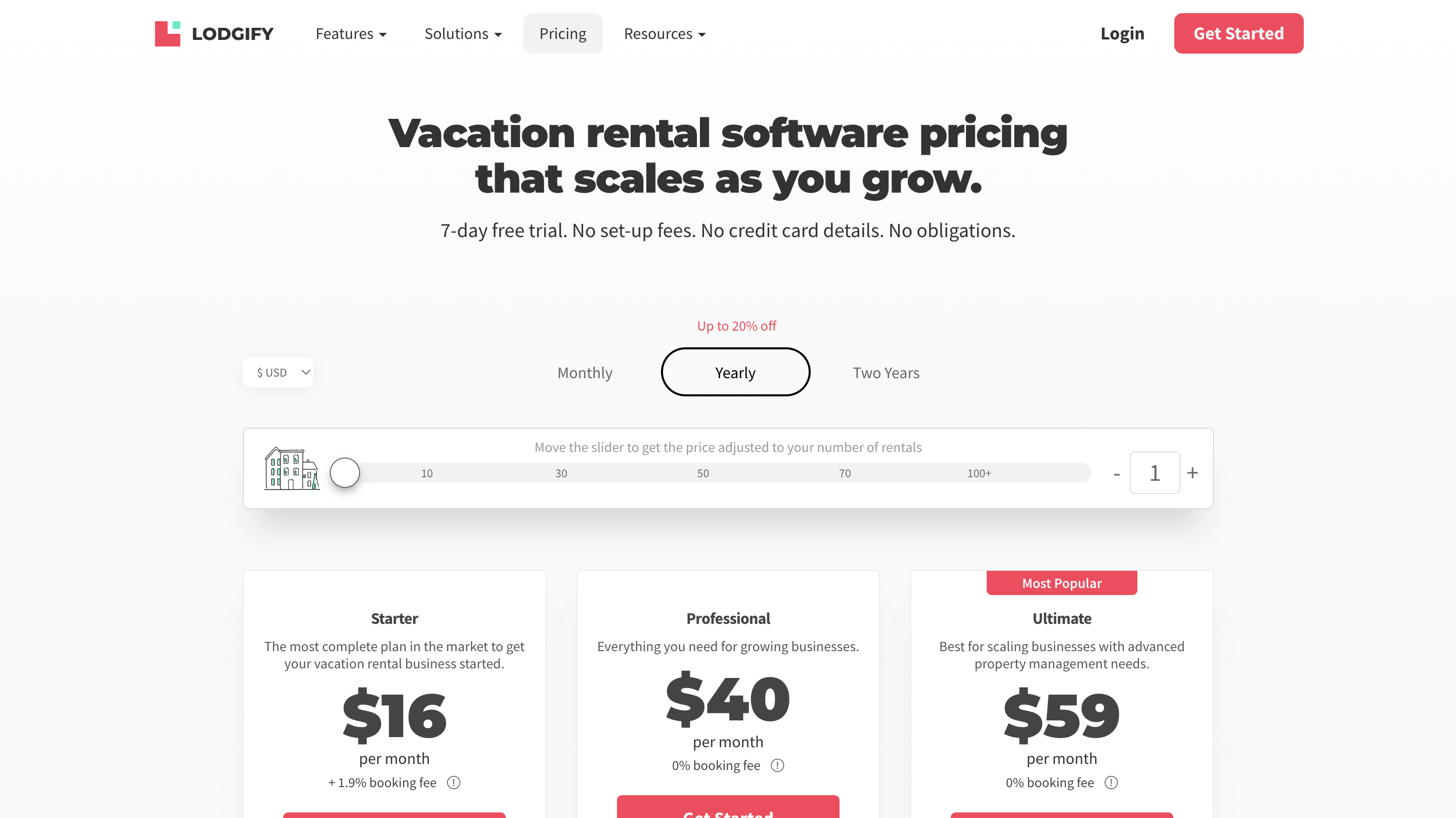Learn How To Manage Your Rental Property on Airbnb
Get access to our 5-day training course on managing your vacation rental property in Dubai.
Download GuideWe’ve been searching for the right property management system for Homevy—something that fits our budget, has the features we need, and can grow with us.
We put together a shortlist of 11 platforms and have been testing them. One demo after the other. So far, we’ve tried Guesty, Hostfully, Uplisting, and Avantio. We’ve also shared our reviews, in hopes that it’ll help other property managers in search of the perfect vacation rental software.
We also gave Lodgify a try. It wasn’t the right fit for us, but it’s still worth reading our review. You might spot something useful for your own setup.
We won’t even lie; Lodgify’s vacation rental software made a strong first impression during the demo. The dashboard was clean and packed with high-level metrics like upcoming bookings and direct revenue snapshots. Out of all the platforms we reviewed, Lodgify was easily one of the most aesthetically pleasing.

Photo by Lodgify
Just like Uplisting, Lodgify leaned heavily into website creation and direct bookings, which immediately caught our eye. The built-in templates were sleek, mobile-friendly, and clearly made with vacation rental owners in mind.
Now if your goal is to drive traffic away from Airbnb, Booking.com, and other OTAs, ( while keeping more revenue in-house), Lodgify could be a great fit.
However, Lodgify’s front-end strength came with some tradeoffs. Compared to Guesty’s deeply operational backend or Hostfully’s flexible integrations, Lodgify felt more “marketing-forward.” The dashboard focused more on branding and performance metrics than operational control.
It made us pause and ask: Can this system really handle the day-to-day work of managing lots of properties? The front looked great, no doubt. But we weren’t sure if the behind-the-scenes tools were strong enough to keep up with everything we’d need as we grow.
Lodgify clearly puts a lot of focus on its website builder, and it shows. During the demo, the rep showed us how quickly we could launch a clean, branded booking site.

Image from Freepik
The templates were designed specifically for vacation rentals, easy to tweak, and came with built-in payment tools and multiple language options. Compared to most platforms we tried, this part felt the most polished.
But once we looked past the website tools and into the property management side, things started to feel a bit basic. The key features were there—calendar syncing, guest messaging, booking management—but not much beyond that.
Unlike Guesty or Hostfully, there wasn’t much in the way of deep automation, flexible workflows, or control over everyday operations.
For teams managing a growing list of properties, that difference matters. Without stronger backend tools, small gaps start turning into extra work, and that’s something we’re always trying to avoid.
After testing Lodgify’s vacation rental software, a few features stood out to us:
This was easily Lodgify’s strongest area. The website builder came with vacation rental–specific templates that looked great out of the box. Customization was straightforward, thanks to a drag-and-drop editor, and we would easily be able to match our branding with minimal effort. The built-in booking engine offered a seamless experience for guests—no third-party redirects, just a clean, direct path to reservation.
Lodgify clearly prioritizes commission-free direct bookings. The booking system supported multiple payment methods, including credit cards and PayPal, with reasonable fees. It also handled extras like security deposits, taxes, and upsell options, making it easy to offer a full-service experience from the start.
During the demo, we noticed that the calendar synced bookings across platforms like Airbnb, Booking.com, and Vrbo. Updates made in Lodgify reflected instantly across all connected channels, helping reduce the risk of double bookings, while keeping availability accurate.
Lodgify’s multilingual tools made it easy to manage guest communications and website content in multiple languages. For a global market like Dubai, this was a key advantage—helping us connect with international guests without extra tools or workarounds.
Out of all the tools we tested, Lodgify felt the easiest to get used to. Like we mentioned before, the drag-and-drop editor made things simple. Compared to Guesty, which felt more advanced and needed more setup, Lodgify felt more beginner-friendly. Hostfully also offered website tools, but Lodgify’s was quicker to figure out.
The property management side was just as smooth. The dashboard looked clean and made sense right away. Calendar views, bookings, and guest messages were easy to find without clicking around too much.
Mobile access was another win for Lodgify. During the demo, we noticed everything worked well on phones and tablets too. While Guesty’s mobile app felt “heavy,” and Hostify’s mobile version missed some important tools, Lodgify gave us what we needed without the extra hassle.
For everyday tasks, Lodgify keeps things simple and smooth. A solid 8/10.
Lodgify’s pricing was clear and competitive, starting at $16/month for a single property on an annual plan. As the number of properties increased, the cost per unit dropped, making it a potentially budget-friendly option for our growing portfolio.

Honestly? We liked the pricing transparency. Most of the key features were included in the base plans, and it was easy to see what you’d get at each tier. More advanced tools like API access and certain integrations were limited to the higher-tier packages, but the essentials were covered without needing major upgrades.
For teams focused on building direct bookings and a strong web presence, Lodgify delivers solid value. But when we factored in the extra tools we’d need to fully manage daily operations at scale, we weren’t sure of the cost advantage compared to more all-in-one platforms.
While Lodgify delivered strongly on website building and direct bookings, we noticed two key limitations that were hard to overlook:
Lodgify’s tools for day-to-day operations were quite basic. It offered simple cleaning schedules but didn’t provide deeper functionality for task assignment, maintenance tracking, or team coordination. For a company like ours, managing multiple properties and working with several vendors are essential. Without them, we’d have to rely on separate tools, creating a more fragmented workflow than we’re aiming for.
The reporting features also fell short of our needs. While Lodgify provided basic financial summaries and booking data, the owner reports lacked customization and depth. In Dubai’s high-end market, property owners expect more than just occupancy rates—they want detailed performance insights, polished reporting, and visibility into their investment. Lodgify’s reporting simply didn’t go far enough to meet those expectations.
Lodgify stood out for all the right reasons when it came to direct bookings. Its website builder and booking engine could create stunning, conversion-focused websites—something that would’ve gone a long way in helping us reduce OTA reliance and improve margins in a highly competitive market like Dubai.
But as we explored beyond the front-end features, the gaps in operational management became harder to ignore. Areas like task tracking, maintenance, and owner reporting felt too limited for a team like ours. Relying on third-party tools to fill those gaps would have created a more fragmented system than we were comfortable with.
Lodgify is a strong option for property managers focused on growing direct bookings and keeping things simple. But for those with more complex operational demands, it’s worth checking out other platforms.
In the end, Lodgify wasn’t the right fit for our full-service Airbnb management model, and this led us to the next short term rental software on our list, iGMS.
Get access to our 5-day training course on managing your vacation rental property in Dubai.
Download Guide